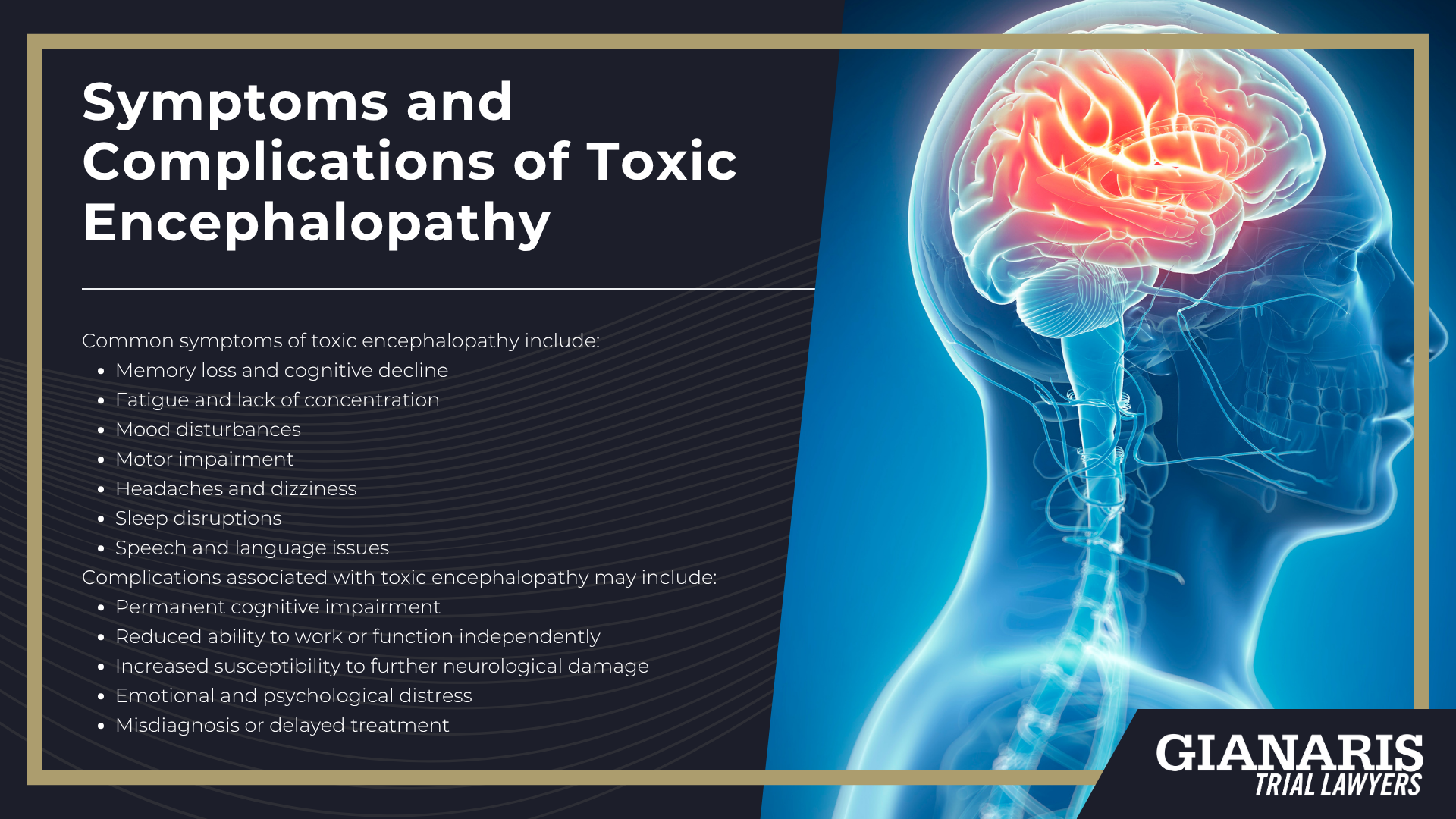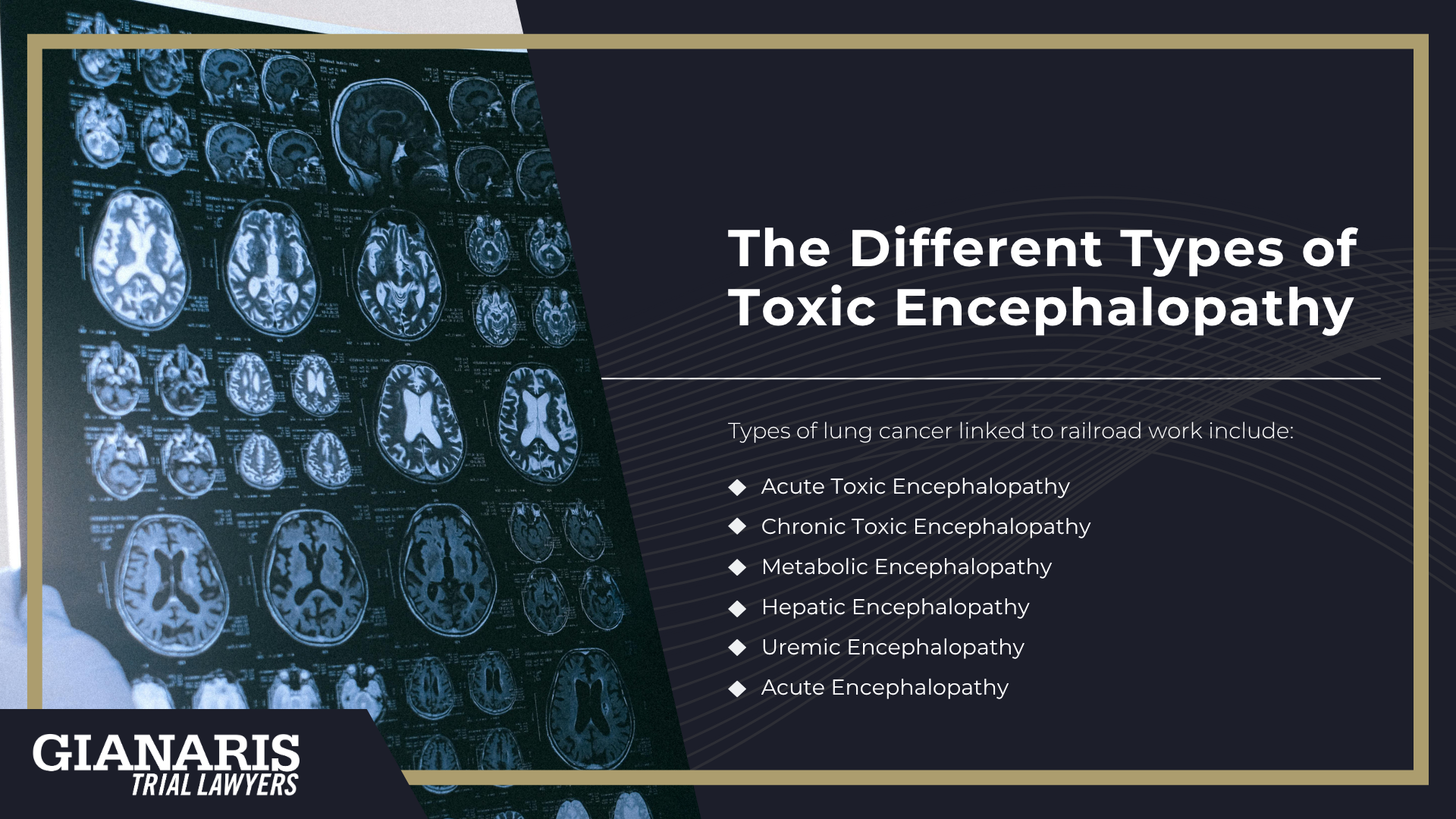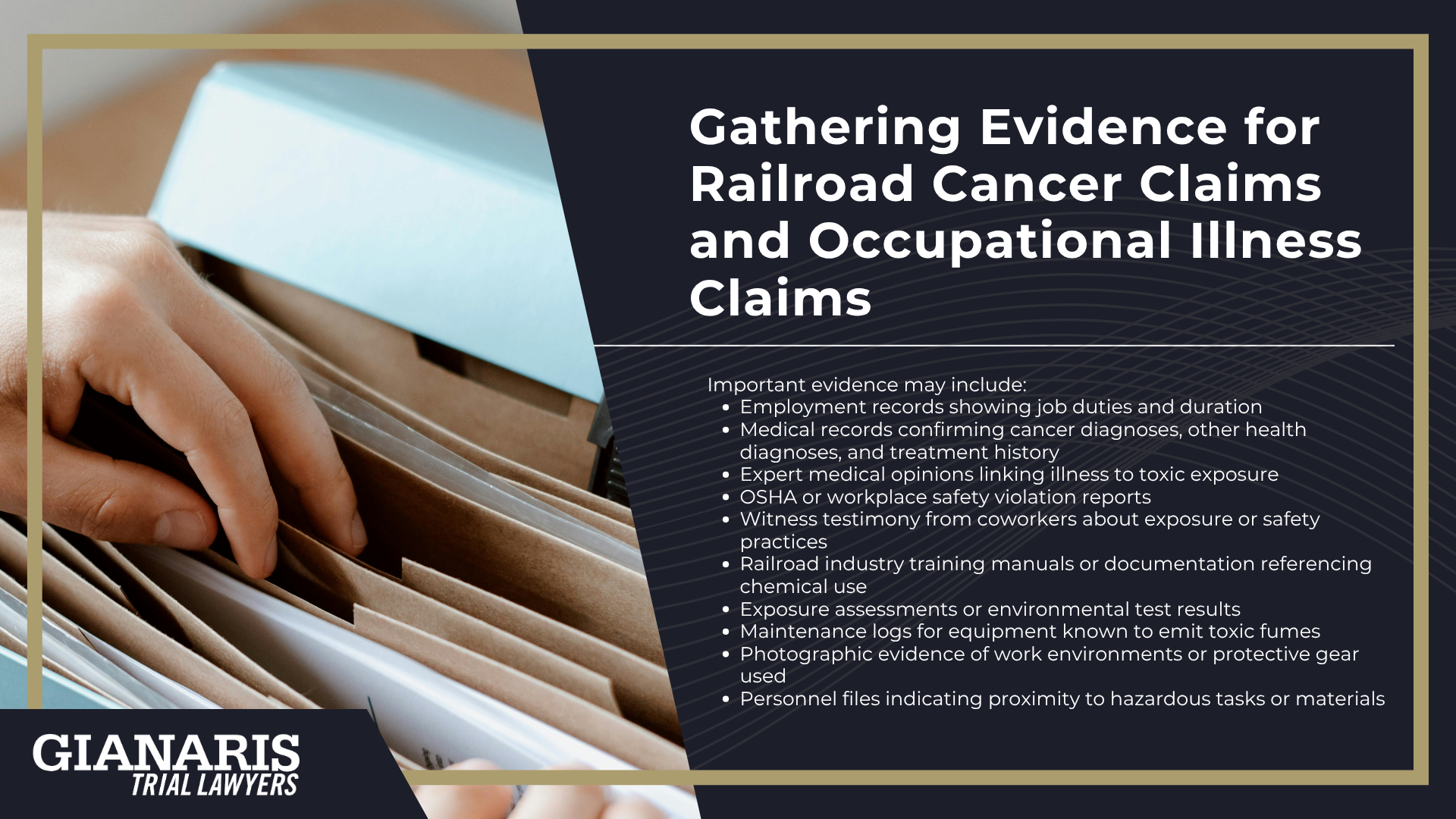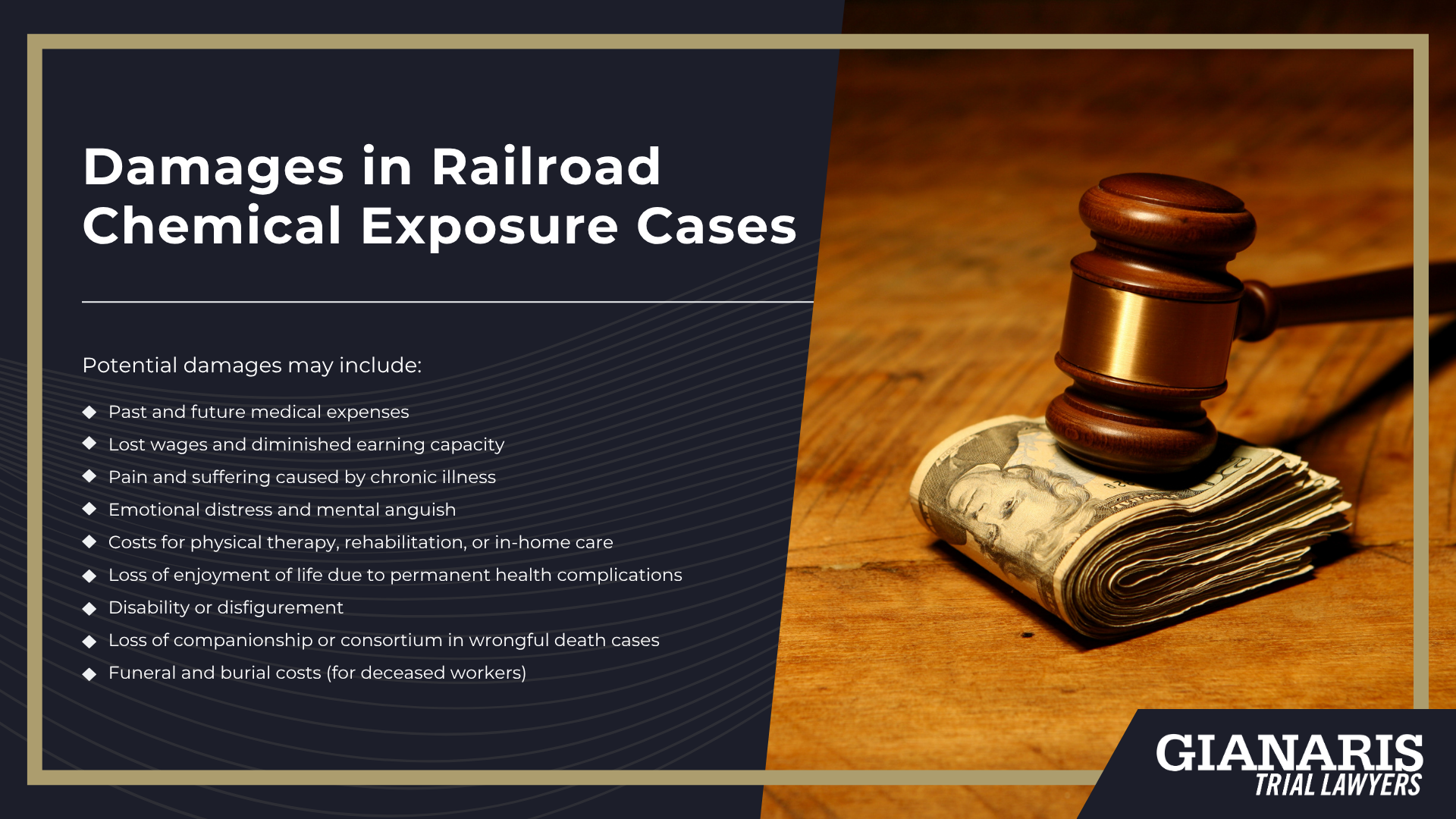Based on scientific literature and trusted public health resources, toxic encephalopathy in railroad workers is most often associated with prolonged or repeated occupational exposure to hazardous substances such as diesel exhaust, welding fumes, solvents, and industrial chemicals.
These exposures can disrupt normal brain function over time or, in acute cases, lead to sudden neurological decline.
The condition, whether acute or chronic, stems from chemical agents that cross the blood-brain barrier and damage neurons, resulting in symptoms such as memory loss, cognitive decline, personality changes, and motor disturbances.
Studies from the National Institutes of Health (NIH) and research published in journals like NeuroToxicology and Frontiers in Public Health confirm a link between industrial solvents (like toluene or benzene), heavy metal fumes, and neurotoxic effects in workers.
Diesel exhaust contains fine and ultrafine particulate matter capable of triggering neuroinflammation, while welding fumes can expose workers to manganese and other metals known to cause parkinsonian symptoms and long-term encephalopathic damage.
These risks are often magnified in railroad settings where confined spaces, poor ventilation, and lack of protective measures increase the absorption and duration of toxic exposure.
Railroad companies have historically failed to implement adequate safety protocols or warn workers of the long-term neurological risks.
Affected employees often experience an insidious onset of symptoms, making early detection and diagnosis difficult without detailed occupational health screening and magnetic resonance imaging (MRI).
Clinicians frequently rely on a combination of a patient’s exposure history, symptom progression, and neurological testing to identify toxic encephalopathy in railroad workers.

Types of toxic exposure in the railroad industry linked to toxic encephalopathy include:
- Diesel Exhaust Exposure – Contains ultrafine particulates and neurotoxic gases that promote neuroinflammation and white matter damage.
- Welding Fumes – May contain manganese, lead, chromium, and nickel, all linked to central nervous system dysfunction and memory loss.
- Solvent Exposure – Toluene, xylene, and trichloroethylene are often used for degreasing and cleaning parts, and have been tied to abnormal brain function and chronic toxic encephalopathy.
- Heavy Metals – Found in engine compartments and older rail equipment, lead and mercury disrupt synaptic function and cause cognitive impairment.
- Pesticide and Herbicide Use – Sprayed along tracks and facilities; long-term exposure is associated with neurological deficits and increased encephalopathy risk.
- Crude Oil and Chemical Spills – Cleanup and handling without proper respiratory protection may contribute to acute or delayed neurological symptoms.
- Paints and Adhesives – VOCs (volatile organic compounds) used in coatings and seals contain neurotoxic agents harmful to brain tissue.
- Silica Dust – Generated during track maintenance and grinding, and linked to neurodegeneration when inhaled over long periods.
These exposures often accumulate silently, resulting in long-term neurological damage that can go unrecognized for years.
Affected railroad employees may qualify for legal claims if they experienced toxic workplace exposure and later developed clinical symptoms of toxic encephalopathy.
Railroad Jobs Linked to an Increased Risk of Toxic Encephalopathy
Railroad employees working in industrial and mechanical roles often faced prolonged, cumulative exposure to neurotoxic chemicals without adequate respiratory protection or hazard warnings.
Exposure to solvents, diesel exhaust, welding fumes, and heavy metals can lead to brain dysfunction and progressive cognitive decline associated with toxic encephalopathy.
Sheet metal workers, machinists, and others engaged in tasks involving paint stripping, degreasing, and maintenance work regularly inhaled or absorbed dangerous fumes that affect the central nervous system over time.
Chronic exposure in poorly ventilated environments further increases the risk, as toxicants can accumulate in the body, particularly when exposure spans years or decades.
Many affected railroad employees may not immediately link their cognitive symptoms (such as memory loss, mood changes, and impaired reasoning) to their work environment.
However, studies show that neurotoxic exposures in industrial workplaces can contribute directly to the development of brain diseases like chronic toxic encephalopathy.
These risks are especially high for roles involving close and repeated contact with chemicals used in engine repair, brake cleaning, painting, welding, or electrical work.
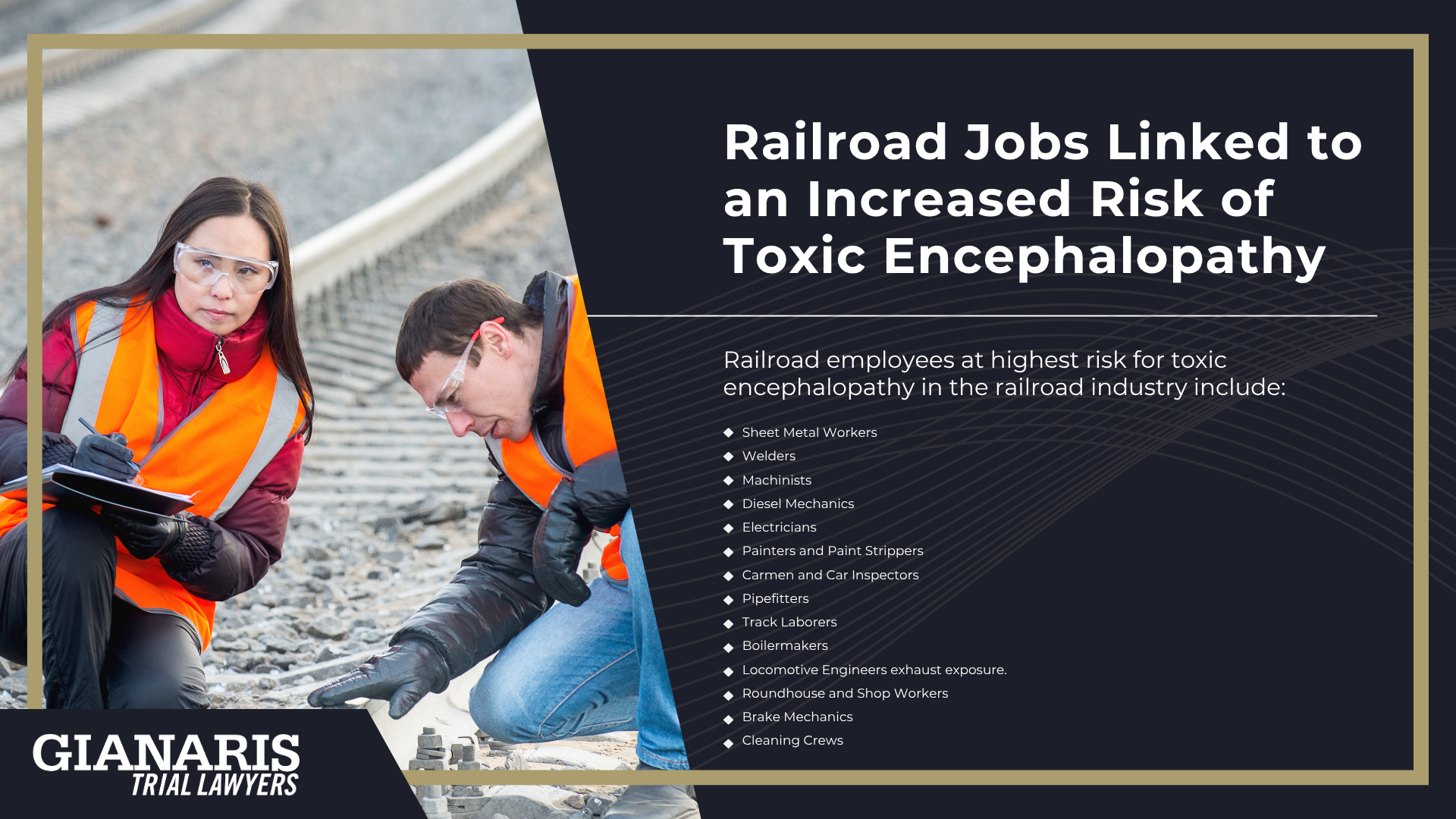
Railroad employees at highest risk for toxic encephalopathy in the railroad industry include:
- Sheet Metal Workers – regularly exposed to welding fumes, degreasers, and solvents that can impair brain function over time.
- Welders – constant exposure to manganese and other neurotoxic metal fumes during welding operations.
- Machinists – worked with industrial lubricants, metal cleaners, and cutting fluids containing neurotoxic agents.
- Diesel Mechanics – exposed daily to diesel exhaust and fuel vapors in confined spaces.
- Electricians – used solvent-based cleaning products and were exposed to PCB-containing components.
- Painters and Paint Strippers – handled solvents such as toluene, xylene, and MEK that are well-known neurotoxins.
- Carmen and Car Inspectors – engaged in inspections and repairs involving degreasing agents and metal treatments.
- Pipefitters – involved in maintenance tasks where chemical sealants and degreasers were common.
- Track Laborers – exposed to herbicides, creosote, and diesel exhaust while maintaining tracks and equipment.
- Boilermakers – worked with insulation removal and chemical cleaning agents in enclosed environments.
- Locomotive Engineers – operated in poorly ventilated engine compartments with continuous diesel exhaust exposure.
- Roundhouse and Shop Workers – high likelihood of cumulative exposure from prolonged work in enclosed, poorly ventilated spaces filled with fumes.
- Brake Mechanics – used chlorinated solvents to clean and maintain brake systems.
- Cleaning Crews – exposed to industrial-strength cleaning chemicals used on train interiors and mechanical systems.
These job roles reflect the wide scope of occupational exposure to neurotoxic substances in the railroad industry.
Workers in these positions may be at increased risk of developing brain disease due to sustained contact with hazardous chemicals that impair neurological function over time.



